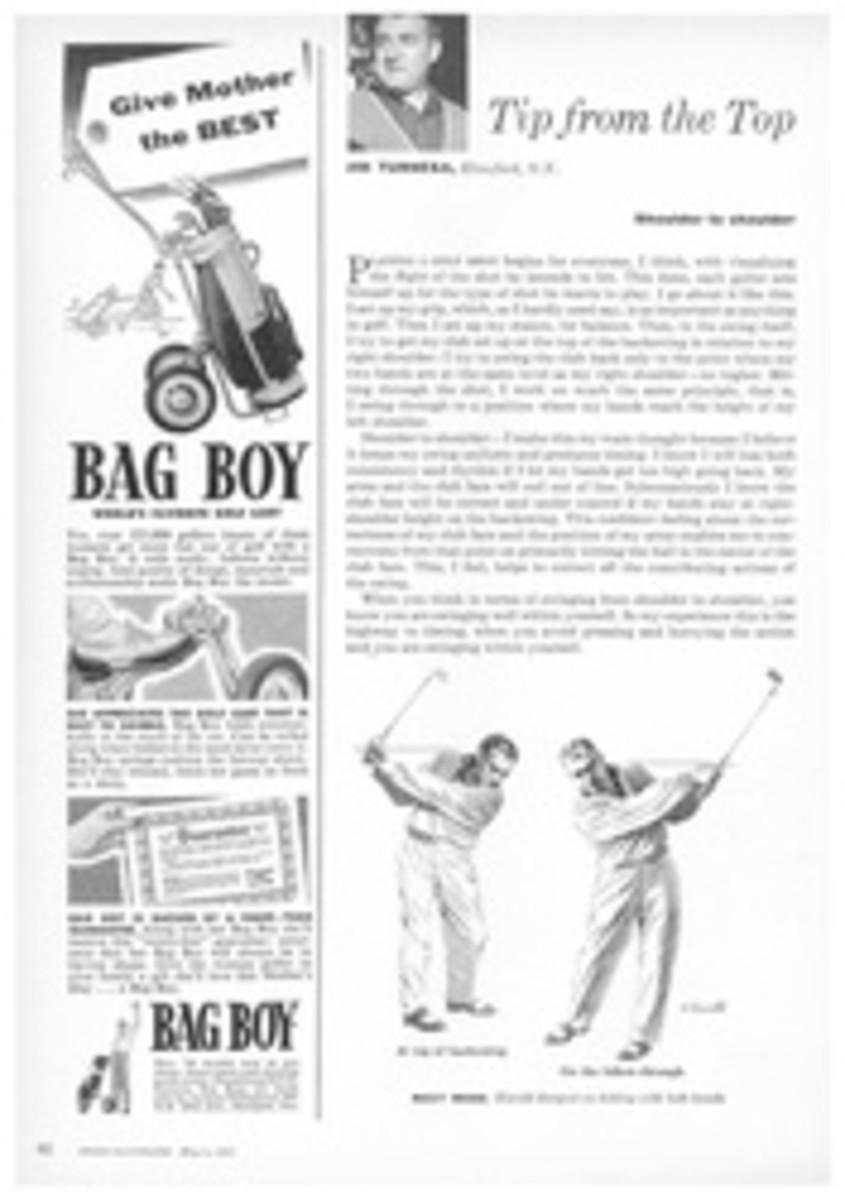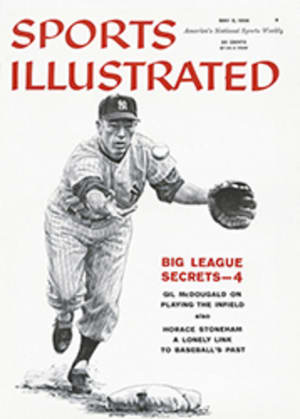
The crew to beat: Jim's cultured Yales
Cold needlepoints of April slant down on the Housatonic River and drip from the eaves of the Yale boat-house. The thermometer stands at about 40°—in short, a first-class sit-by-the-fire afternoon, but the crew squad do not seem to recognize this fact. Inside the boathouse 60 of them—varsity, juniors and freshmen—are making the transition from student to athlete, shedding Shetland sweaters and gray flannel slacks, donning blue rowing trunks and heavy sweat shirts. There is a buzz of easy talk but none of the horseplay of a football locker room. In one corner a freshman coach strums a ukulele.
That was the scene at New Haven the other day as the Yales got ready for two full hours of wet, punishing drill on the river. The opening of their season was just a week away. They had been picked by most of the experts as the best crew in the land, and they meant to prove it. But until they got on the river they meant to be as agreeably relaxed as if they were indeed spending an afternoon by the fire.
This is part of the tradition of the Yale boathouse, where well over a century's worth of old crew heroes look down, a bit stiffly as well as proudly, in rows of pictures on the wall. It is also part of the method of Coach Jim Rathschmidt, a tactical philosopher with ideas of his own about when to up the beat and when to lower it. As men got into their rowing gear, Rathschmidt occupied himself with a game of shove-halfpenny—an innocent diversion learned at Henley in which coppers are skittered across polished wood toward a pair of target lines. His opponent was Jerry Romano, rigger and caretaker of the Yale shells. Romano won, whooped gently and announced, "I always beat him. He must owe me a million."
"O.K.," said Jim, "I owe you."
In Rathschmidt's tight program, his daily game of shove-halfpenny should last just long enough to give his oarsmen time to relax and joke with each other. "It's the only time they have to get to know each other," he said. "I can't have a bunch of strangers rowing together."
Then it was time to up the beat. The varsity shell was lowered into the water. "Time trial today," Rathschmidt called to Bill Becklean, the cox. "Mile and five-sixteenths—Henley distance." Romano started the coaching launch, and as soon as Jim was aboard he pulled out into the wake of the varsity shell which was moving upstream.
In a manner of speaking, Rathschmidt has been moving upstream all his life. He never attended college. "Wasn't bright enough to get into Princeton," he says. His rowing experience was confined to a schoolboy crew at The Hun School in New Jersey. But rowing has been in his blood since he was 8 years old and big enough to wrap his hands around a pair of sculling oars.
"When I was at prep school, I lived with my uncle, John Schultz," he recalled one night recently during dinner at Mory's. "Uncle John was the rigger at Princeton. A grand guy. There wasn't a thing he didn't know about boats. Even built a scull once. He always had rowing people around the house at night. Huge oarsmen. I remember listening to their talk and watching them, filled with admiration for the kind of men they were—big, strong and quietly self-possessed. I always wanted to be one of them." He smiled, sheepishly, as though caught in involuntary confession, and shoved his empty plate across the scarred table. The worn surface was covered with carvings by members of the 1924 Yale crew.
"Those were good years," he said. "Some nights Uncle John would get restless and he'd say, 'Come on, kid, let's take a drive.' We'd go down to a tavern on Nassau Street where the rowing buffs used to hang out. He'd talk and I'd listen. I never got bored. When he died in 1936 I sort of took over his job. It wasn't anything I had ever planned." Except for time out during World War II as an infantry officer, Jim stayed at Princeton for 14 years as coach of the freshman, lightweight and then heavyweight crews. In 1950 he was offered the head coaching job at Yale, and he said yes.
Yale went through its first season under Rathschmidt undefeated in sprint competition, but the highlight of his career came in 1956 when the Eli crew won the Olympic eight-oared event in Australia.
NO BRASS BAND
"I discovered then," said Jim, "that life would always proceed in an orderly fashion at Yale no matter what the records of its athletic teams.
"I returned to New Haven expecting a brass band to greet me at the station. No brass band. Well, maybe a small party back at my office in Ray Tompkins House. No party. I finally met one of the assistant track coaches in the hall. He greeted me with 'Hi, Jim, where you been lately?' 'Australia,' I replied modestly. 'Oh yeah,' he said to me, then added, 'How did you make out?'
"I went home that night feeling as though I were the only ruffian in the crowd, but filled with a wonderful sense of satisfaction."
As his launch followed the varsity shell up the river for the time trial, Rathschmidt kept a wary eye on the water in front of the shell. The river was still high and crowded with flotsam. From time to time, from his swivel seat in the bow of the launch, Rathschmidt spotted floating debris and shouted warnings to Becklean in the shell. Even a small timber could rip a 30-foot wound in the belly of the shell.
The crew moved upstream rhythmically, in seemingly perfect unison to the untrained eye. But Rathschmidt continually discovered imperfections, to be corrected with bursts of instructions over a power megaphone.
The time trial was run downstream and there was no doubt that the swollen river current aided the oarsmen tremendously. But even so, the clocking of just under six minutes for the mile and five-sixteenths was phenomenal.
"They say we're the crew to beat," said Rathschmidt back at the dock. He studied his powerfully lean oarsmen as they trooped by. "I guess we are the crew to beat."
Yale is. Rathschmidt has the finest collection of oarsmen in the country and, providing he can find the right combination, the Elis should be undefeated. His stroke and No. 7 seats are manned by veterans of the 1956 Olympic boat, Bob Morey and Rusty Wailes, and a reliable stern pair is the most important part of any racing crew. John Cooke, another member of the Olympic crew, is back in his old No. 3 spot, although Rathschmidt has been experimenting with him at the bow seat. John Holbrook, at the No. 5 oar, is the only other holdover from last year. New to the boat are Bill Garnsey, Sam Lambert, Emory Clark and John Ostheirmer. Rathschmidt is still experimenting with their seating, however.
In their first outing this year Yale trimmed a good Boston University crew by more than three lengths. Yale's next outing comes this weekend in the Blackwell Cup against Pennsylvania and Columbia on New York's Harlem River. Penn could prove to be Rathschmidt's undoing. Coach Joe Burk retains five of the eight oarsmen who finished second to Cornell's great undefeated boat in last year's IRA and, if anything, his 1958 crew is better. The Quakers trounced Rutgers in their opener three weeks ago and last week led all the way in beating Princeton by a full length in the Childs Cup. Columbia, vastly improved, was third.
The Penn victory over Princeton was something of a surprise. The Tigers had defeated Navy in their first outing and were favored to win the Childs with comparative ease.
Syracuse, too, despite an opening loss to Harvard on the Charles River last week, is capable of pressing Yale, and the Orange will get its chance May 17 on Princeton's Lake Carnegie. However, it will be the only chance for Coach Loren (Big Bear) Schoel, since Yale, because of a 106-year-old commitment with Harvard, does not row in the IRA.
Oddly quiet, but always dangerous, is lanky Stork Sanford of Cornell. Sanford lost his entire varsity crew, last year's national champions and winners at Henley. "We won't be as powerful this year," says Sanford, "but I can't say I'm pessimistic." The Cornell boat will be composed of members of last year's undefeated jayvee boat and several promising sophomores.
Wisconsin, the only crew of consequence in the Midwest, is hampered perennially by late spring thaws on Lake Mendota. The Badgers are four to six weeks behind other crews in training, but Coach Norman Sonju is used to this handicap. "I think we are considerably better than last year," he said the other day after timing his varsity in 9:04 for the mile and three-quarters. "We had a slight tail wind," Sonju admitted, "but then we weren't quite up to our racing stroke either."
COAST RULERS
On the West Coast, Washington and California still rule the waters, though Washington, because of an NCAA probation, will not be able to compete in the IRA championships.
Even dour, straight-talking Al Ulbrickson, the Huskies' coach, calls it "Washington's best crew since the war." And many an oldtime Husky crew buff regards the 1958 varsity eight as one of the four or five best crews in U.S. history. Though Washington will not be permitted to race against the best in the East this year, it will journey to England to compete in the Royal Henley Regatta, and Ulbrickson's men have a good chance of winning.
California's coach, Ky Ebright, while rating Washington "the power of the West Coast," is not giving anything away to the Huskies. The Cal crew has twice beaten Southern California this season and also holds a win over UCLA.
"The sport is reviving here," says Ebright. Stanford has fine new facilities and UCLA will have them in a short time when the Marina Del Rey Harbor is completed." Ebright hopes to bring his men back to the IRA this year. Cal meets Washington on the Oakland Estuary May 10 and Stanford at Redwood City May 17. The Washington-California race will undoubtedly decide the West Coast champion.
All in all it looks as though Yale's year is here. But Jim Rathschmidt is sure, even if he wins them all, someone will be asking him around mid-July, "How did you make out?"
PHOTO
YALE'S POST-OLYMPIANS: GARNSEY, HOLBROOK, LAMBERT, CLARK AND OSTHEIRMER
PHOTO
RICHARD MEEK
MASTERS of the shell game, Jim Rathschmidt and his Yale crew present a picture of quiet confidence that challenges any crew in the land to try to beat them.

